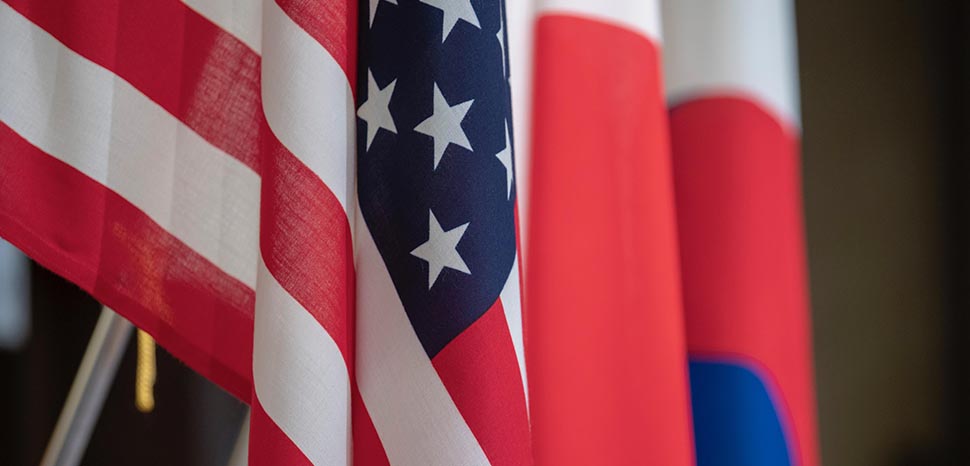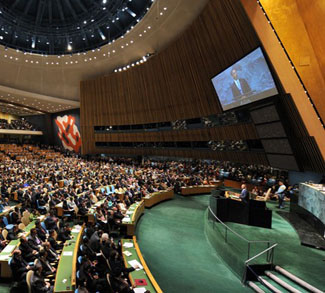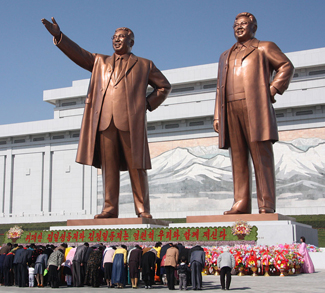The forthcoming trilateral summit involving the United States, Japan, and South Korea, planned for August 18, 2023, has captured global interest. The gathering offers an invaluable perspective to evaluate the nuances in the interconnections between these three nations. Significantly, this occasion marks the inaugural independent meeting among these countries’ leaders, thereby reflecting the transformation in the geopolitical configuration of the Asia-Pacific region and these nations’ pivotal role therein.
The tripartite interaction between these nations symbolizes the intricacies intrinsic to the sphere of international diplomacy. The connections amongst these countries can be perceived as a complex choreography, skillfully managing a multitude of strategic, economic, and sociopolitical dimensions. This equilibrium is often subject to challenges due to the dichotomy characterizing these tripartite ties — the robust strategic partnerships each country maintains with the United States, juxtaposed with the historical strains that persist between Japan and South Korea.
The United States, Japan, and South Korea are cornerstone components in the geopolitical tapestry of the Asia-Pacific region. Their collective global presence, especially within the framework of their tripartite association, has significant bearings on regional balance, economic progression, and the changing power dynamics in the Asia-Pacific.
These connections are not isolated entities, but rather are closely knit into the wider international fabric. The specter of an ascending China, the consistent menace posed by North Korea, along with the dynamic terrain of global trade and security, introduce additional dimensions to these connections. Consequently, the impending summit does not merely represent a platform for diplomatic dialogue between these nations, but also serves as a vantage point from which we can scrutinize the diverse dynamics embedded in this tripartite association.
Historical Context: Strained ROK-Japan Relations
Peering through the lens of history, the relations between Japan and South Korea are a tapestry interwoven with moments of cooperation shadowed by the dark specter of unresolved issues from the past. The primary source of these tensions lies rooted in the era of Japanese colonial rule over Korea from 1910 to 1945, a period marked by cultural suppression, forced labor, and myriad human rights abuses.
The most poignant among these historical affronts is the charged issue of the ‘comfort women,’ a term alluding to the multitudes of Korean women coerced into sexual servitude by the Imperial Japanese Army during World War II. Despite several attempts at resolution, including the agreement reached in 2015, this issue persists as a diplomatic bone of contention, mirroring the deep-rooted anguish and bitterness yet to be fully assuaged.
Compounding this, territorial claims over the islets referred to as Dokdo in Korea and Takeshima in Japan have periodically ignited, amplifying tensions. The sovereignty over these islets transcends territorial rights, possessing symbolic importance for both countries, being tethered to national honor and historical recollection.
These historical contentions have left indelible imprints on the political, economic, and societal linkages between Japan and South Korea. They have cast enduring shadows over diplomatic rapport, precipitated trade disputes, and molded public sentiment, often impeding the potential for enhanced collaboration between the two nations.
Within this framework of historical disputes, the role of the United States surfaces as a pivotal element. As a mutual ally to both Japan and South Korea, the United States assumes a unique position. It often acts as an intermediary, endeavoring to alleviate the ramifications of these historical strains on its strategic partnerships with both nations. The significance of the US role is underscored by its post-WWII engagements in the region, its military presence, and its sustained dedication to the security and stability of the Asia-Pacific region.
Washington’s Role: Bilateral Balancer
As an established superpower, the United States has continuously upheld strong bilateral relationships with both Japan and South Korea. These relationships, which took form in the wake of World War II and the Korean War, have developed into essential alliances that significantly shape the geopolitical milieu of the Asia-Pacific region.
The alliance between the U.S. and Japan is anchored in a mutual dedication to democratic principles, human rights, and legal governance. This relationship serves as a bedrock of U.S. security objectives in Asia, essential for maintaining regional stability and advancing prosperity. The alliance has evolved beyond military and security spheres to include various mutual interests, encompassing areas like trade, scientific innovation, environmental concerns, and global health.
Likewise, the US-South Korea alliance, encapsulated in the phrase “We Go Together,” has progressed from its military-based inception against the North Korean menace into a comprehensive partnership. It encompasses a broad range of sectors such as nuclear energy cooperation, free trade, and global matters including climate change and cybersecurity.
Nevertheless, the United States often finds itself delicately navigating a diplomatic path that requires careful balancing of its relations with both countries. On one end, it seeks to uphold and strengthen these alliances, as they are integral to its strategic footprint in the Asia-Pacific. On the other, it is faced with the task of dampening the historical frictions between its two allies, which at times can pose challenges to trilateral cooperation.
This responsibility is further convoluted by the domestic political landscapes of each country, leadership transitions, and changing national priorities, all of which can significantly impact the dynamics of these bilateral relationships. The U.S. must steer through these complex waters with a discerning and nuanced approach, fully aware that its actions carry significant implications for regional stability and its strategic goals.
Moreover, the US role extends beyond just being a strategic partner—it also includes the responsibility of past engagements. Its post-WWII governance of Japan, involvement in the Korean War, and its continued military presence in both nations shape the perceptions and expectations of its role in addressing Japan-South Korea relations.
Mutual Security Concerns Loom
The Tripartite Ministerial Consultation held on June 3, 2023, offers a compelling example of the joint strategic interests that connect the United States, Japan, and South Korea. During this meeting, the defense chiefs of these countries undertook a comprehensive examination of pressing security challenges, most significantly the relentless nuclear and missile threats posed by North Korea.
North Korea’s nuclear objectives and missile expansion programs have persistently troubled these nations and the wider international community. These apprehensions have been heightened by North Korea’s recurrent missile experiments and its avowed commitment to augment its nuclear prowess. The perceived danger from North Korea not only destabilizes regional peace but also directly contravenes the national security objectives of the United States, Japan, and South Korea.
To counteract this shared menace, these countries have reaffirmed their dedication to mutual defense and deterrence strategies. Their collective efforts, as showcased during the Tripartite Ministerial Consultation, strive to align their diplomatic and security policies concerning North Korea, with the intention of suppressing its nuclear aspirations and lessening the potential threats.
Beyond the issue of North Korea, these countries are also connected by their mutual pledge to sustain the rules-based international system. They have collaborated on an array of other security matters, including maritime security, counterterrorism, cyber risks, and space security. This cooperation also extends to global peacekeeping initiatives, humanitarian aid, and disaster response operations, which underscore their mutual commitment to global peace and stability.
Additionally, these shared security interests are embedded within a broader strategic framework. As democratic nations in the Asia-Pacific region, they jointly navigate a geopolitical terrain characterized by China’s ascent and shifting power dynamics. These collective challenges further highlight the significance of their tripartite cooperation.
The Implication of China’s Rise: A Joint Hurdle
Undeniably, China’s emergence as a global powerhouse has irreversibly reconfigured the geopolitical scene of the Asia-Pacific region, constituting a collective predicament for the United States, Japan, and South Korea. This ascent, marked by extraordinary economic advancement, speedy military modernization, and an increasingly bold foreign policy, has triggered a substantial shift in the regional equilibrium.
China’s economic strength, underscored by its position as the world’s second-largest economy, holds both opportunities and anxieties for these nations. On one flank, China is an essential trade ally, offering expansive markets for exports and provisioning diverse goods. However, on the flip side, its economic power has been used to wield political pressure, illustrated by its economic backlash in response to geopolitical disagreements.
In addition, China’s wide-ranging military modernization scheme has sounded the alarm. Its escalating naval capacity, progress in missile technology, and ongoing militarization in the South China Sea have ignited unease over its motives and the potential for intimidation or conflict.
China’s bold foreign policy, particularly its territorial claim over Taiwan and its moves in the South and East China Seas, brings direct opposition to the regional norm. Its Belt and Road Initiative, aiming to broaden China’s economic and strategic influence globally, also carries far-reaching implications for the global power balance.
Therefore, the rise of China brings an added layer of intricacy to the trilateral dynamics among the U.S., Japan, and South Korea. It presents a collective problem, pushing these nations to reevaluate their strategies and seek common ground. They are driven to delicately manage their relations with China, harmonizing their economic interests with the imperative to counter coercive tactics and uphold the rules-based order.
The “China factor” also highlights the importance of the trilateral cooperation among the U.S., Japan, and South Korea. As democratic entities in the Asia-Pacific region, they have a common interest in maintaining a power balance and advocating for a free and open Indo-Pacific. Thus, their trilateral collaboration is not merely about resolving historical tensions or managing the North Korean menace; it’s also about collectively reacting to the shared challenges brought about by China’s ascent.
Looking Ahead: The Trilateral Summit and Beyond
The imminent trilateral summit involving the United States, Japan, and South Korea assumes increased importance within the intricate lattice of geopolitical dynamics. This summit, uniting leaders from these three nations, stands as a powerful emblem of the joint challenges and mutual interests that unite them. It showcases the understanding that despite the historical tension currents and varying national interests, the facts of the geopolitical landscape require a certain degree of cooperation.
Nonetheless, the path forward is anything but simple or linear. The mission of steering through shared and conflicting interests remains a daunting challenge. Reconciling historical differences isn’t just about diplomatic negotiation; it also necessitates addressing deep-rooted public sentiments and national identities. Will these nations locate a trajectory that respects the distressing histories while permitting a forward-thinking relationship?
Similarly, harmonizing national interests with the need for trilateral cooperation is a delicate endeavor. Each nation has its strategic priorities, economic interests, and domestic political factors. The difficulty lies in aligning these diverse interests towards mutual objectives, while ensuring no nation feels its interests are threatened.
The emergence of a shared challenge, such as China’s rise, brings an additional facet to this balancing task. The “China factor” requires closer collaboration among these nations, yet simultaneously elevates the stakes. Each nation has intricate relations with China, characterized by entwined economic bonds and strategic rivalries. Navigating these relations while demonstrating a unified front requires nuanced diplomatic maneuvering.
Therefore, the trilateral summit presents a chance to tackle these intricate issues and map a path for the future. It offers a stage for these nations to converse about their mutual concerns, devise cooperative strategies, and potentially alleviate historical tensions. The outcomes of this summit could determine the future course of their trilateral relations, influencing not just their individual relations, but also the broader geopolitical terrain in the Asia-Pacific region.
Conclusion
Finding definitive answers to the complex questions surrounding the trilateral relationship between the United States, Japan, and South Korea is no easy task. The intricacies of these relationships, informed by a tapestry of historical legacies, strategic interests, and evolving geopolitical realities, make for a subject of rich and ongoing debates within the field of Political Science and International Relations.
As scholars, it is our duty to persistently scrutinize these evolving dynamics. This involves casting a critical eye over historical precedents, dissecting current geopolitical trends, and examining the policy orientations of the respective nations. Each of these elements contributes to our understanding of the trilateral relationship, helping us to tease out the threads of continuity and change that shape these interactions.
The upcoming trilateral summit presents a pivotal juncture in this ongoing analysis. It provides a concrete context within which to explore the complexities of these relationships, offering a snapshot of the ways in which these nations navigate their historical tensions, shared interests, and the broader geopolitical landscape. This event promises to illuminate the challenges and opportunities that lie ahead, shedding light on the ways in which these nations are negotiating their trilateral relations amidst the shifting sands of global power dynamics.
The developments arising from this summit will undoubtedly serve as a rich source of insight into the evolving nature of these trilateral relations. Each statement made, decision taken, and policy articulated during this summit can provide valuable data points for our understanding. These insights not only help to enrich our current academic discourse but also set the stage for future research and policy considerations.
The views expressed in this article belong to the authors alone and do not necessarily reflect those of Geopoliticalmonitor.com.




